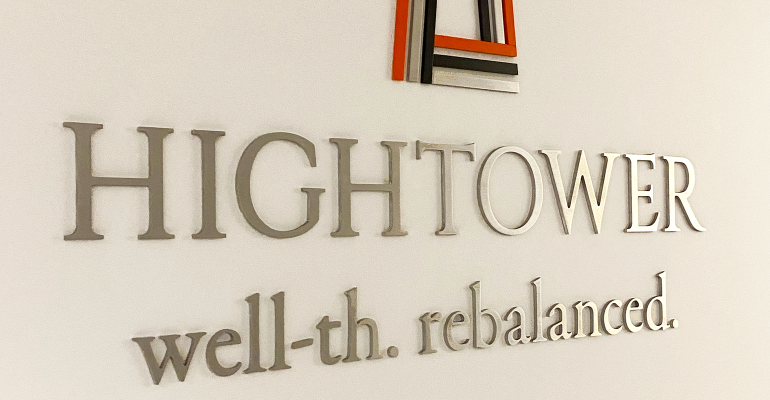As some of the big Wall Street firms continue to make announcements about when they expect to bring their employees back into the office, Hightower has introduced a new hybrid workplace model, giving its 210 corporate employees flexibility to work remotely two or three days a week but requiring them to be in the office the other days. The firm decided on the model after a four- to five-month process of surveying employees and conducting focus groups with staff members.
“Some big firms in the industry, they came out and said, ‘Everybody back to the office.’ We never had that point of view. We knew it would be something different than the way it was before,” said Hightower CEO Bob Oros. “We recognized flexibility and time in the office and at home was important.”
Under the new HIGHflex workplace model, which Oros anticipates will take effect in February at the firm’s Chicago headquarters, employees will have one consistent day a week when they come into the office and will choose the second day depending on the need.
“Those two days become really important, and we need to build our operating models around those two days—really important team meetings, cross-functional project meetings,” Oros said. “If those two days become people sitting in cubes and offices, we’ve failed.”
In addition, there will be two days a month that are “mass critical” when everyone will be required to come in, meaning employees will be in the office three days during those weeks.
The firm is also adding flexibility with its paid time off—doing away with the model of awarding a set number of vacation days with one where employees can use whatever time off they need.
“This is all about collaborating with your manager, using what you need, but not abusing it,” Oros said. “We want to help our folks live their best lives, which means both professional and personal.”
The new HIGHflex model also includes an option to work from anywhere in the world for four weeks per year.
“You’ve always wanted to take that trip to Italy. Go to Italy for a month, rent an Airbnb, do your work. Happy to have you do it,” Oros said. “That was an important addition to give folks the opportunity to really do things that they’ve always wanted to do that maybe they couldn’t take a month to actually experience.”
Hightower has also announced some changes to its benefits, expanding its paid maternity leave from 12 to 16 weeks and paid paternity leave from four to eight weeks.
“If you look at our corporate demographic, the biggest part of the pie is 26 to 35, so we have a lot of folks who are starting families or just started a family and may be expanding,” Oros said. “So this is a huge benefit to them, and allows us to be way more supportive as a company.”
Hightower currently has 210 corporate employees and 20 open positions, and it has more than 1,200 total people across the organization, including advisors and their support staff.
The firm was back in the office on a volunteer basis in mid-June 2021, and Oros says there are anywhere between a quarter to a third of its employees in the office on any given day.
The new benefit changes will take place Jan. 1, and he expects the hybrid working model to take effect in February, when a remodel of the Chicago office is complete. The firm also recently announced it would move its New York–based employees out of its current location on Fifth Avenue into three new locations in the city.
Some of Hightower’s advisors and most of their support staff are employees. Hightower has given its field offices the ability to adopt the hybrid model, if they choose, or modify it for their own needs.
“Advisors really don’t care where you’re located, as long as you can solve their issue,” Oros said.
A lot of the firm’s advisors have already converted to a hybrid model.
“What our advisors have taken from this experience is also the ability to get more scale from doing things virtually,” Oros said. “Traditionally advisors always want to get in front of clients physically, which limits their ability to see clients. If they’re traveling, they may be on the road two days to see a couple of clients.”
There has been a little bit of travel, but Oros said travel and expense costs are down significantly among his advisors.





